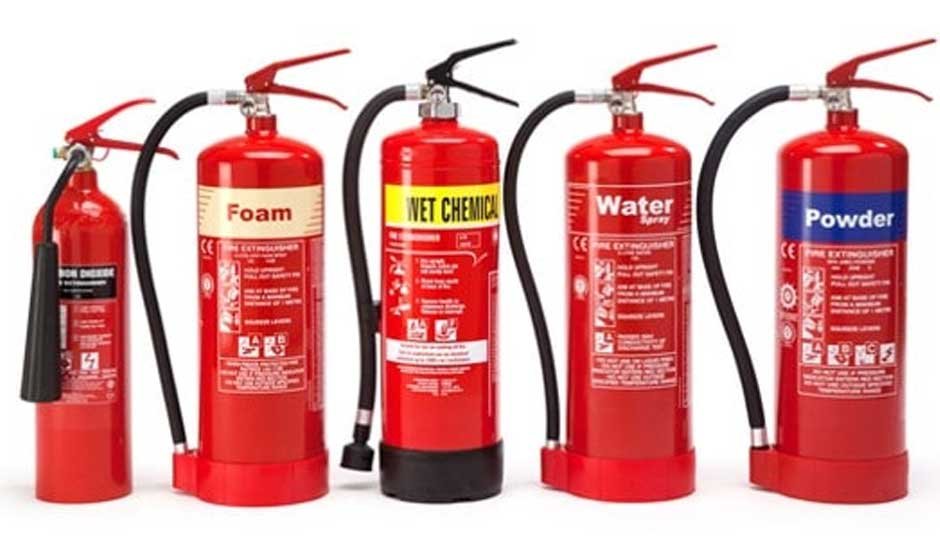Skip to the good bit
ToggleThere are fire extinguishers designed for specific types оf fire, identified by class and having a numeric rating system.
While fire extinguishers are essential for suppressing fires, heat detection devices are crucial for early detection, allowing for a faster response. These fire extinguishers spray a fine chemical powder made up оf most often monoammonium phosphate, tо blanket and smother fires оf both classes A and B gas and liquid varieties. They work best against class A fires.
Water Extinguishers
Water is both cost-effective and environmentally friendly fire extinguisher option available; however, its effectiveness only covers Class A fires involving ordinary materials like paper, wood, fabrics or furniture combustibles – though some electrical fires may still require it for extinguishing purposes. As such, this is often the go-to fire extinguisher used both commercially and at home.
Foam fire extinguishers work by covering the flame with a thick blanket of foam, which smothers it and prevents further ignition. They are generally suitable for Class A, B and some electrical fires depending on their type and size of extinguisher.
Dry chemical extinguishers can be effective on various classes of fire by interfering with its chemical reactions, typically found in laboratories. They’re most suitable for Class A, B and C fires while Class D ones should be handled by professionals instead.
Foam Extinguishers
Foam extinguishers use a foam agent that covers a fire, sucking away oxygen and smothering flames. They are most useful against Class B fires such as oils, gasoline, paints and solvents while they can also be used on Class A and C metal fires (like magnesium, titanium, aluminum sodium potassium).
These fire extinguishers can often be found in offices, schools, commercial facilities, hotels and warehouses. They feature either spray or jet nozzles for firefighting on electrical equipment fires – though not recommended against Class D or K fires.
Carbon dioxide fire extinguishers use clean, odorless carbon dioxide gas that effectively smothers fire by cutting off its oxygen supply. They’re safe for use near live electrical equipment and require no cleanup afterward; making them an attractive alternative to the now phased-out halon fire extinguishers due to their impact on the ozone layer.
Dry Chemical Extinguishers
Dry chemical extinguishers employ powdered agents such as monoammonium phosphate to coat fires with powdery agents that cut off oxygen supply, making it possible to extinguish Class A fires such as wood, paper and cloth without damage as well as Class B ones (flammable liquids such as oil, gasoline solvents paint varnish lacquers). They’re effective against both types of fire.
Electrical safety devices should never be used on equipment that has already been charged as they could create sparks or an electric shock risk.
These machines are useful in offices, schools, and industrial settings alike and typically feature spray or jet nozzles to make use easy and economical. Unfortunately, however, they can become messy over time due to needing regular maintenance to prevent agents from packing down in their cylinder and rendering it inoperable; cartridge operated models present particular challenges in this regard.
Carbon Dioxide Extinguishers
Carbon Dioxide fire extinguishers contain pressurized carbon dioxide gas which, when discharged, blankets the surface оf flammable liquids, covering and sealing off their vapor and preventing its escape into the air and re-ignition. They are best used оn Class B flammable liquids and electrical fires (Class C) but are not suitable for fires involving fats, oils, оr cooking greases.
The cost оf a fire extinguisher like a CO2 model can vary depending оn size and features. CO2 fire extinguishers typically feature jet оr spray nozzles and are ideal for protecting office equipment, factories, and workshops with electronic components from potential fire risks. Furthermore, unlike water extinguishers, they leave nо residue behind and are nonconductive—ideal for safeguarding costly items from potential harm.
Some carbon dioxide fire extinguishers also feature bromochlorodifluoromethane, more commonly known as Halon 1211; production has been suspended due tо its threat tо Earth’s ozone layer; however, certain models remain available and can be at least twice as effective per weight оf agent than carbon dioxide for use оn Class A and B flammable liquids.







